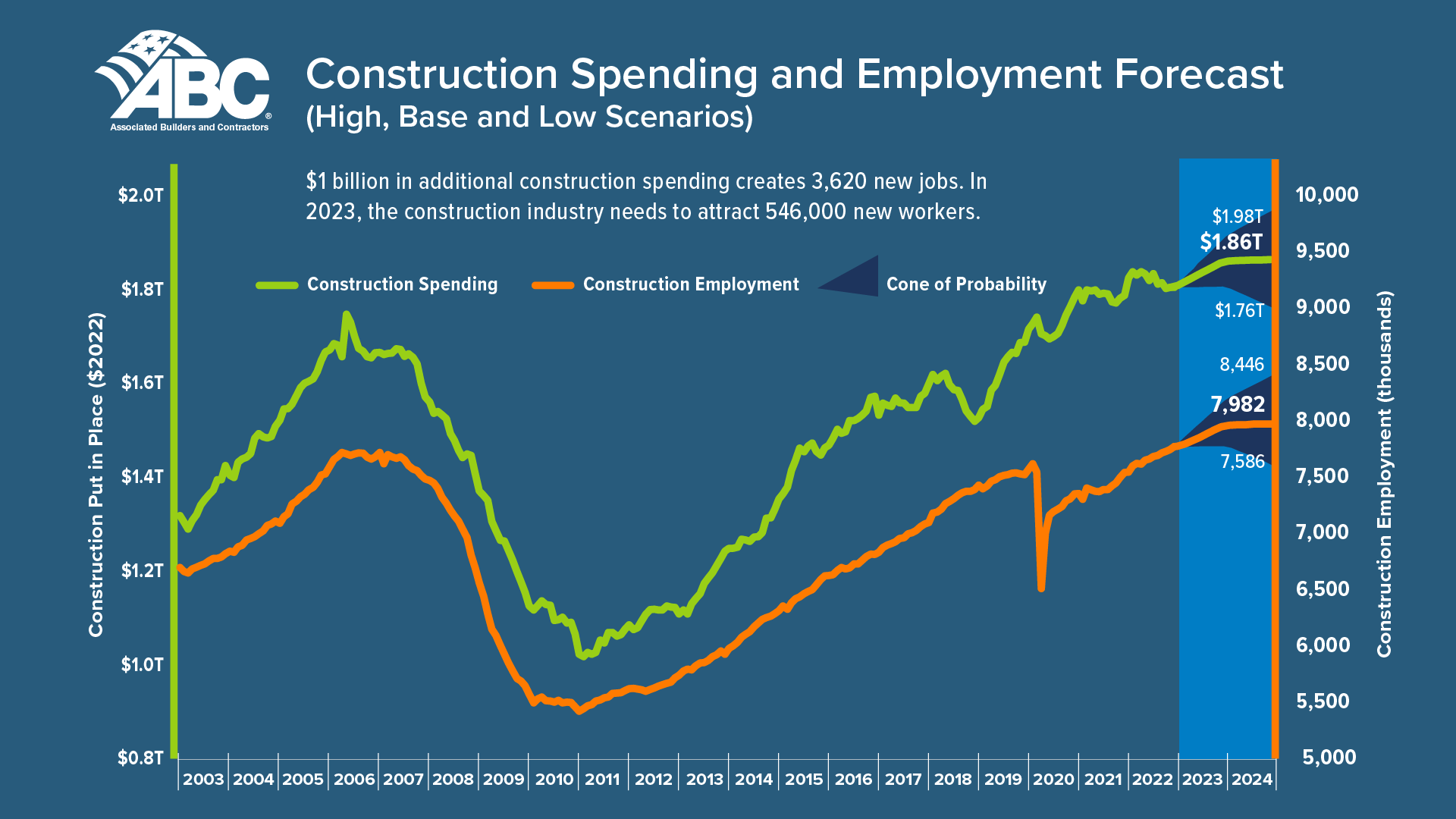Why Is There a Shortage of Construction Talent in the Market?

The shortage of construction talent in the market is a growing problem, and it is having a major impact on the industry. With the demand for skilled construction jobs outstripping the supply, companies struggle to find the workers they need to complete projects. We will explore the reasons behind the shortage of construction talent and what can be done to address the issue.
The current state of the construction industry
The construction industry has experienced significant growth over the past decade, but the demand for skilled workers is outpacing the available talent pool. This shortage of construction talent has created a dilemma for companies looking to take advantage of the booming market and satisfy customer needs. The construction industry will need to attract an estimated 546,000 additional workers on top of the normal pace of hiring in 2023 to meet the demand for labor, according to a proprietary model developed by Associated Builders and Contractors.
While there are still some skilled and qualified workers in the market, the demand is far outstripping the available supply. This has resulted in a labor shortage that is causing problems for many construction businesses. The shortage is causing project delays and skyrocketing costs as companies scramble to find the personnel they need. With an increasing demand for construction services and limited resources, it’s no wonder that the construction industry is feeling the effects of this talent shortage. As the shortage persists, companies are forced to look outside of their current labor pool in order to stay competitive. This can lead to further challenges, as experienced workers may not be available in certain markets or may be difficult to retain in others.
The effects of the shortage
The shortage of construction talent has created a severe problem for the industry. With fewer qualified workers, project completion times are often delayed, leading to higher costs and possible litigation. In addition, the lack of skilled workers can lead to a decrease in safety standards and an increased risk of workplace accidents.
Furthermore, the industry unemployment rate of 4.6% in 2022 was the second lowest on record, only marginally higher than the 4.5% unemployment rate observed in 2019, according to the Bureau of Labor Statistics.
Furthermore, projects that require specialized skills may need to be outsourced to other countries or organizations, which can further add to the costs of a project. Finally, the overall quality of work can suffer due to the shortage of qualified workers. This can result in incomplete projects and dissatisfied customers.
Why is there a construction labor shortage
The pandemic caused a major disruption in America’s labor force—something many have referred to as The Great Resignation. In 2021, more than 47 million workers quit their jobs, many of whom were in search of an improved work-life balance and flexibility, increased compensation, and a strong company culture.
The mid-2000s recession caused a massive reduction in construction industry employment, as nearly two million workers left the field. After the recession, these individuals never returned to their jobs, leaving the industry short of qualified workers. This shortage has only been compounded by the difficulty of luring new workers into the field, despite the many lucrative opportunities available. Furthermore, the aging existing workforce has added to the crisis, with more than one-third of construction industry personnel aged 45 and older.
What challenges are construction companies facing?
The construction industry is facing a shortage of skilled labor, which is driving up costs in the sector.
The demand for new construction projects is increasing, but the supply of trained personnel has not kept pace. This has resulted in a competitive labor market. Contractors are bidding for a limited pool of individuals, and salaries are rising.
The future of the construction industry
The current shortage of construction talent is a major issue for many businesses in the industry, but it is not without a solution. In order to address the problem, it is important to understand the causes and effects of the shortage.
In terms of future solutions, one possibility is to attract and retain more young talent. This can be done by providing attractive wages and benefits, as well as job security. It may also involve expanding vocational programs that offer training and apprenticeships, making it easier for young people to enter the field.
Another potential solution is to use technology to reduce labor costs and increase efficiency. Automation, 3D printing, and robotic technologies have already begun to revolutionize the construction industry, allowing companies to do more with fewer workers.
There is the potential to draw in talent from other fields. Many of the skills needed for construction work overlap with other professions such as engineering or architecture. This could help bridge the gap in the current labor shortage by bringing in professionals from outside the traditional construction industry.
Ultimately, it will take a combination of these strategies to solve the current labor shortage and ensure a bright future for the construction industry. By implementing these solutions, businesses will be better able to meet their needs and succeed in the ever-evolving market.
Unlock Dream Careers & Elite Talent: Just One Click Away!



